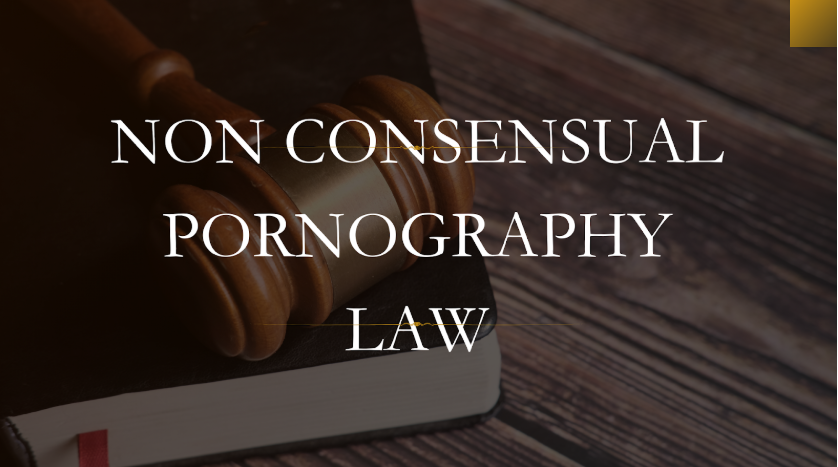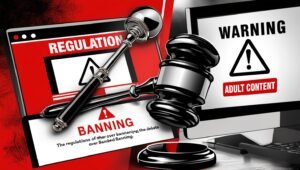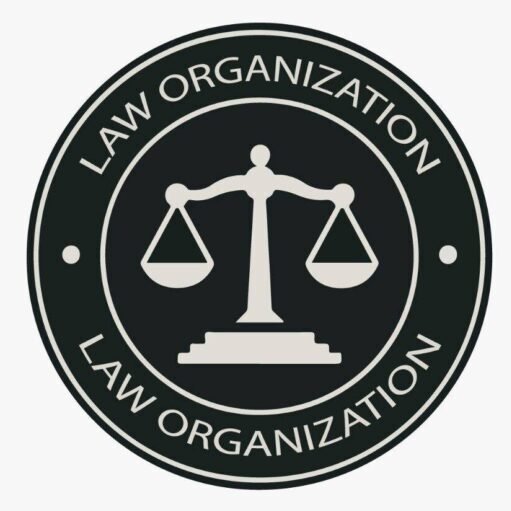Personal privacy in the modern era is more vulnerable than ever.
Websites, cell phones, and social media have never provided easier tools for disseminating pictures and movies, but they have introduced new tools of exploitation. The worst new issue is nonconsensual pornography, otherwise referred to as “revenge porn,” which is a situation where intimate photographs or videos are shared without consent.
Nonconsensual pornography is not so much a matter of privacy invasion but more about psychological and emotional impact on victims. It is about control, power, and the trauma of seeing one’s own most intimate moments being shared for public viewing without one’s consent or knowledge. The wave of this issue has had legislators and activists scrambling to craft legislation providing legal remedy for victims. But the war is by no means over, and a huge number of people are not yet aware of how big the issue is or of the protection provided.
If you’ve ever heard the term nonconsensual pornography but aren’t quite certain what it is or how it impacts individuals, this blog is going to walk you through the essential facts. From what exactly nonconsensual pornography is, all the way to what laws have been put in place to address it, what are Nonconsensual Pornography Laws and how to keep yourself safe, here’s all you need to know.
What Is Nonconsensual Pornography?
Nonconsensual pornography is the distribution or sharing of nude photos, videos, or audio files of an individual without permission. It is delivered in many forms, and usually, it is intended to hurt, humiliate, or psychologically harm the subject of the image or video.
Some of the ways this may happen is:
- Revenge Porn: Another popular type of nonconsensual porn involves a person posting intimate pictures of his/her ex-partner with the purpose of causing them harm in order to get revenge after being separated. The reason is usually to hurt, humiliate, or to dominate the victim.
- Partner Exploitation: Intimate content may be captured in private moments within a relationship expecting trust. Posting such content without consent from the individual would then be nonconsensual pornography.
- Hacking or Leaked Content: Hackers can hack into a person’s phone, computer, or online storage and pilfer their personal photos, which they would leak without permission. In some instances, people would “leak” a person’s personal content as a form of exposure or exploitation.
- Manipulation or Deception: An individual can be manipulated, deceived, or coerced into viewing explicit content, only to have them redistributed later without their knowledge. This can include blackmail and threats cases.
The similarity in all these cases is the deep invasion of the individual’s privacy and consent, and a deliberate, risky intent in sharing or distributing these videos or images.
The Emotional and Psychological Impact
The emotional impact of nonconsensual pornography can be disastrous. For most victims, the issue is less about the intrusion into their privacy; it’s about being taken away from being able to control their own bodies and being made to face the emotional impact of seeing themselves mocked or objectified online. They are likely to have several emotional impacts.
Shame and Humiliation: Being forced to confront an intimate part of your life that was supposed to be personal can be extremely shameful. Victims feel like their dignity has been taken away from them in the most public way possible.
Anxiety and Depression: Ongoing worry about being exposed on the web, or emotional distress from viewing photos posted on websites, may contribute to heightened anxiety, depression, and suicidal behavior.
Stigma and Isolation: The victims end up suffering from social stigma since their intimate moments are brought to the public eye. They get embarrassed or stigmatized by friends, family members, or employers who get to know about the pictures. They mostly get isolated due to stigma and are unable to seek help due to shame or fear of judgment.
Harassment: In many cases, sharing these images results in ongoing harassment, both on and off the internet. Victims can receive threatening emails, be publicly humiliated, or even be subjected to unwanted face-to-face encounters.
These psychological harms can be permanent and have long-lasting effects on a person’s mental well-being, relationships, and sense of security.
Legal Protections Against Nonconsensual Pornography & Related Nonconsensual Pornography Laws
Fortunately, awareness of nonconsensual pornography has been growing, and most states and countries around the world are enacting legislation to safeguard victims of this online abuse. The legislation generally addresses criminalizing the sharing of explicit material without consent, as well as providing the victims with the right to pursue justice.
1. State-Specific Laws in the U.S.
United States laws on nonconsensual pornography are state-specific, but there has been a lot of progress in criminalizing such acts. In most states, distribution of naked photos without consent is a felony, while in other states it is a crime in a civil context. In most states, the offender can be prosecuted criminally and sued civilly by the victim.
For instance:
- California enacted one of the initial statutes specifically prohibiting nonconsensual pornography. According to the law, individuals convicted of sharing nude photos without permission face jail time and substantial fines.
- New York enacted a law criminalizing non-consensual sharing of intimate photos as a felony, and the convicted offenders have extremely strict sentences. The law also enables lawsuits to be instituted by victims in pursuit of damages for injuries incurred.
- Texas also has laws against the distribution of obscene material, with the crime being fined and incarcerated for. Criminal prosecution or civil action can be brought against this kind of crime in Texas.
Most of these laws also extend to cases of images distributed with sinister intent, for example, when someone threatens to disseminate the material for monetary compensation (extortion).
2. Federal Law
Although there is no federal law under which it is an offense to create nonconsensual pornography, the Violence Against Women Act does contain victim protections. It has provisions criminalizing the dissemination of intimate images without consent if done with the purpose of harassing, intimidating, or injuring the victim. The Cybercrime Prevention Act can likewise be utilized for prosecuting offenders who disseminate explicit materials without consent through the internet.
In addition, federal legislation that governs platforms on the Internet, like the Communications Decency Act (Section 230), leans toward asking platforms to intervene when their platform is used for uploading nonconsensual pornography. Duty, though, rests in the hands of specific platforms to implement these guidelines.
3. International Protections
Internationally, some countries are advancing more protections against nonconsensual pornography. The United Kingdom and Australia are two such nations that have enacted laws criminalizing the distribution of intimate images without consent, and the majority of the rest are moving in this direction.
How Do You Protect Yourself Against Non consensual Pornography?
Although the law is changing, there are actions you can take to decrease the chances of being a victim of nonconsensual pornography:
Restrict What You Share: Share private photos or videos with a person whom you totally believe in. Always think about the consequences if the photographs or videos were leaked or shared.
Apply Tough Privacy Settings: Make your social networking profiles private, and avoid posting personal material on those social platforms which are not secure. Only let your trusted friends or followers see your posts or photos.
Encrypt Your Devices: Use strong passwords, encryption, and two-factor authentication on your devices to secure your personal content.
Think Before You Trust: In intimate relationships, ensure you discuss boundaries with regard to privacy. Trust is essential, but you should ensure that your friend or partner will respect your privacy and never use intimate pictures against you.
Be Active with Cybersecurity: If you consider having someone steal your videos or pictures; go ahead and secure your accounts by modifying passwords and activating security features such as two-factor authentication.
Seek Assistance If Hurt: If you find that your intimate material is being distributed against your will, move quickly to have it removed. Approach the site administrators and register a complaint. Consult an attorney to know your rights and possible means of proceeding against the offender.
What to Do If You’re a Nonconsensual Pornography Victim
Steps to Take if You Are a Victim of Nonconsensual Pornography
If you realize you’re a victim of nonconsensual pornography, the following is what you do:
Report the Content: Report the content to the platform and inform them that the content is being shared. All platforms have reporting mechanisms for intimate image abuse and will take action quickly to have the content taken down.
Report It to the Police: In the majority of instances, nonconsensual pornography is illegal. Reporting it to the police will result in criminal charges for the individual who posted your content. If you live in a state that makes this offense illegal, the police will assist you in filing a complaint.
Take Legal Advice: You will be advised by a lawyer on your rights and what actions you can take to pursue the matter legally. In some cases, you can claim compensation for the harm inflicted.
Support Services: Contact organizations that work with victims of online exploitation. There are many nonprofit organizations that offer legal aid, counseling, and emotional support to assist you in coping with the trauma of being exploited in this manner.
Conclusion: The War Against Non Consensual Pornography
Nonconsensual pornography is a vile invasion of privacy, dignity, and consent. The psychological and emotional harm it inflicts cannot be overstated. That said, the legal tide is slowly turning with more and more states and nations enacting laws to protect victims and bring perpetrators to justice.
Even though much remains to be done, we have seen more awareness and legal movement providing a more favorable environment for this crime’s victims. If you or someone who knows you are a victim of nonconsensual pornography, hope, there is help and you do not have to fight alone.
REFERENCES :
What is Nonconsensual Pornography
Legal Voice Nonconsensual Pornography
Film Pornography Laws – Regulations and Legal Boundaries [2025]




